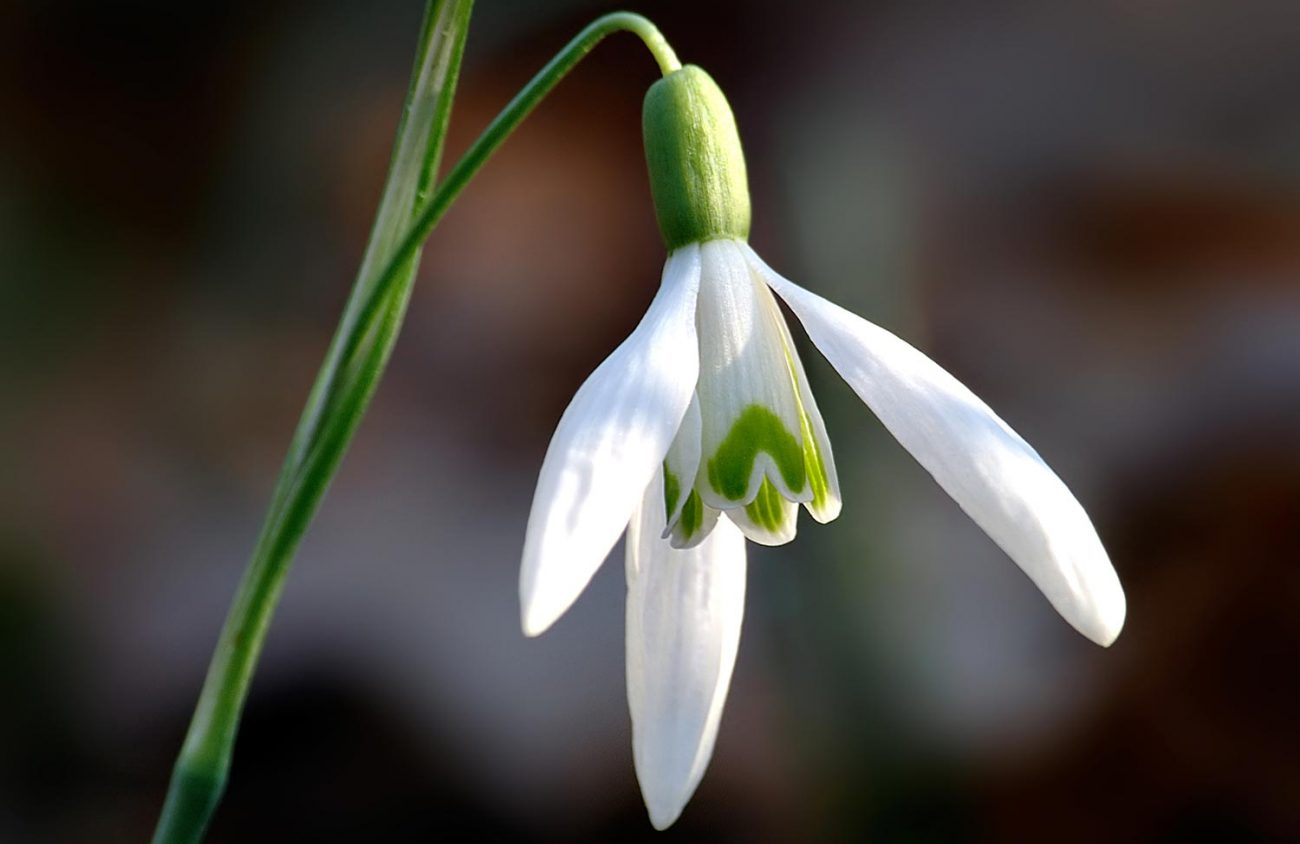Cheer up! Yes, I know it’s bleak outside, but every day brings a few more minutes of daylight and new intimations of spring — and thinking about your garden beats fretting about politics.
Order some seeds. Pile some fall leaves around overwintering vegetables. If you haven’t recycled your Christmas tree yet, cut off the branches and use them to secure that leafy mulch. As long as the ground isn’t frozen or waterlogged, you can even get digging. If you have heavy soil, leave it in clumps to get broken down by frosts, or mulch over it with leaves for the worms to work on.
There’s a lot we can do outside in winter, but first we have to get out there. It helps if we can see encouraging signs of growth. Many spring bulbs are appearing now, so make sure you can see them! It can be a struggle for small bulbs like snowdrops to penetrate layers of sodden leaves and other detritus, so help them out with a little clean up. If you have snowdrops and they don’t seem to be coming up yet, try moving some (when they finally emerge!) to a spot that gets more sun or has lighter soil that warms up faster. Snowdrops like to be moved any time they are showing leaves, whether before, during or after bloom.
The common snowdrop, Galanthus nivalis, is the first “spring” bulb to bloom and is often available to purchase in full growth in nursery pots. Unless you can get some from a friend’s garden, that’s the best way to acquire them, because bulbs that have been dried for commerce don’t always sprout.
If you must buy snowdrops as dry bulbs, look for them in September and plant them as soon as you can. And if you are going to order bulbs, you might like to look for Galanthus elwesii, a larger snowdrop species that blooms a week or two before the common one. The flowers last longer, too. McClure and Zimmerman (mzbulb.com) offers this species, along with many other interesting bulbs, big and small.
There are other advantages to a bit of winter clean up besides liberating bulbs. Clearing leaves and debris from paths and lawn edges restores definition to the garden. Next, clip away any decaying foliage around evergreen plants or anything with interesting structure or early growth.
Hellebore buds are emerging now. It’s customary to remove last year’s leaves from Lenten roses (Helleborus x hybridus) by the end of January, before the flowers open. I like to keep the leaves on young plants if they still look nice and healthy and won’t interfere with the flowers.
Winter clean up is likely to reveal some weeds. Many weeds keep on growing right through the winter in our climate, and this is an ideal season for weeding that often goes to waste. I try to get out on mild afternoons even if it’s only for an hour or so to tackle bittercress and other shallow-rooted annual weeds.
Where the soil is workable, I’ll make a start on stubborn, deeper-rooted weeds like dandelions. I keep a border fork handy so I won’t be tempted to decapitate perennial weeds such as dandelions with a weeding hoe. A border fork is a scaled-down version of a digging fork, just the right size for “popping” dandelions and their relatives from lawns and beds. Push the fork deep in the ground a few inches from the center of the weed, then slowly and gently pull back on the handle like a lever to lift the weed slightly. You should then be able to pull the weed out with your hand, leaving most of the soil in place.
Any dry day well above freezing is good for winter pruning of apples, pears and berry bushes as well as many deciduous ornamentals. Later this month, give hardworking fruit trees and shrubs some slow-release fertilizer like blood, fish and bone.
This month I’ll start working on my blueberries, cutting out dead twigs and old, unproductive wood. By now I can easily see the fat flower buds on productive growth, and dead branch tips are dark brown or black. Once I have pruned and weeded I will feed the bushes with an organic acid fertilizer, scratching it into the soil. In a month or so, when rain has washed the fertilizer farther into the soil, I’ll mulch the blueberry berms with coarse sawdust.
Here’s another benefit to winter gardening: It keeps you in shape for gardening in spring. Backaches and pulled muscles are far less likely if your body is still accustomed to all that bending, squatting and lifting. Happy New Year!
Rachel Foster lives and gardens in Eugene. She can be reached at rfoster@efn.org
